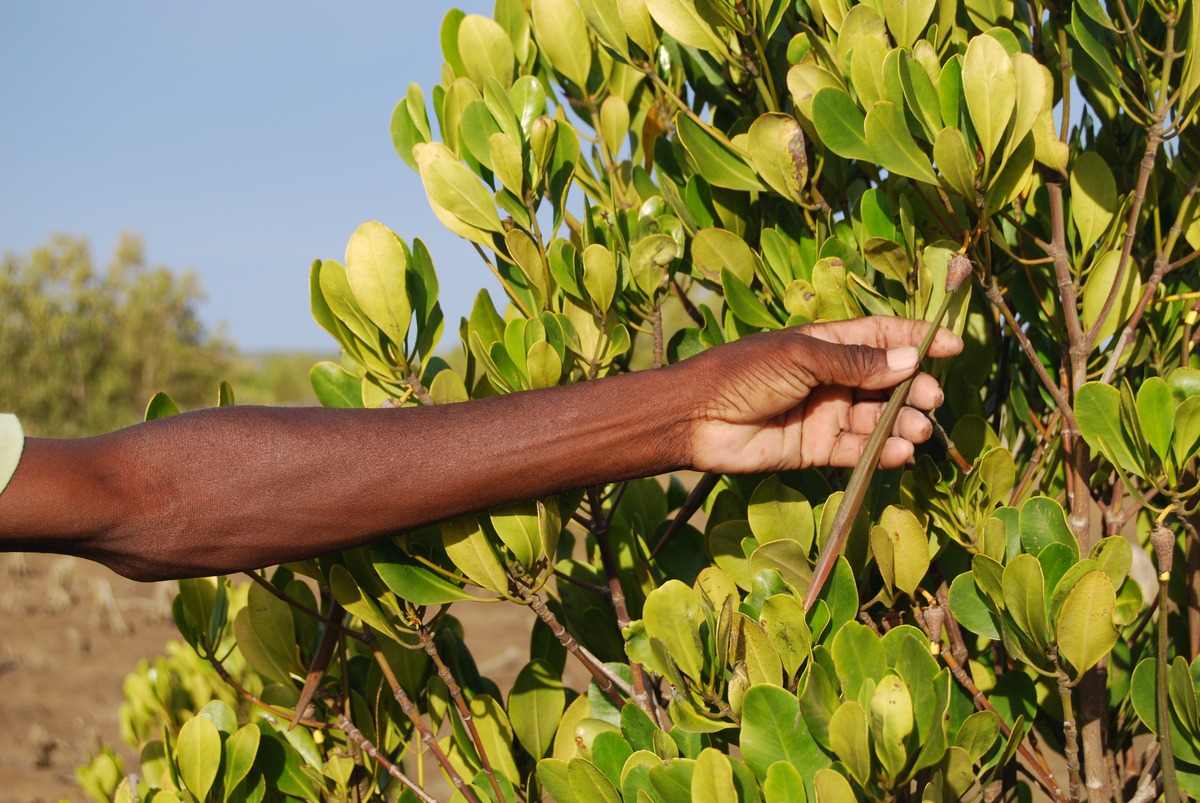COP26 –Recap
What were the main outcomes for oceans and what do they mean for mangroves?
From the 31st of October until the 12th of November, UNFCCC COP26 took place in Glasgow. For two weeks, parties negotiated next steps regarding the development and implementation of the Framework Convention on Climate Change and its agreements and protocols. Between historic breakthroughs or “Blah Blah Blah” the question remains: was COP26 a full success? Or a major disappointment?
As is often the case, the truth lies somewhere in the middle. We from Save Our Mangroves Now! (SOMN) had the chance to gain direct insights from on-site participation and can therefore confidently state that outcomes regarding marine and coastal ecosystems met expectations. The achieved increased acknowledgement of the ocean’s role in climate change mitigation and adaptation also means increased acknowledgement of the role of mangroves. Here’s our overview.
Speeches, announcements and pledges
Particularly present and striking this year were the speeches and calls from the Small Island Developing States (SIDS). Tuvalu’s Minister Simon Kofe caused a sensation even before COP26 began when he delivered his speech in knee-deep water to draw attention to climate change and rising sea levels and the devastating consequences SIDS have therefore to suffer from. “You might as well bomb us” – were the words of Palauan President Surangel Whipps Jr. who was addressing the slow death his island is facing, while international policymakers are not paying enough attention. Intact mangroves are a temporary life insurance for many coastal communities of SIDS as they protect shorelines from erosion, lower wave heights and storm surge depths and are able to adapt to sea-level rise by moving landwards.
Words were followed by actions – or rather announcements. Positive headlines were made by various declarations such as the third “Because the Ocean” that has been signed by 16 countries so far or the “Ocean for Climate” declaration in which more than 100 civil society organizations united to emphasize the need for governments to include and to value the vital role the ocean plays in global emission reduction. Apart from the open ocean that stores around 25% of the global CO2 emissions, mangroves are real carbon sinks as they store at least 5 times more carbon than terrestrial forests.

© WWF-Malaysia / Mazidi Abd Ghani
Creating save spaces for marine biodiversity
After all these declarations, things became even more concrete with the launch of the Eastern Tropical Pacific Marine Corridor (CMAR) initiative in South America. This mega marine protected area, adopted by Ecuador, Colombia, Panama and Costa Rica, will form a vast marine corridor to protect migrating marine life such as sharks, whales and sea turtles. Within the 500,000 sq km long corridor, international fishing fleets are not allowed. As the Galapagos and other small islands are included in the corridor, mangroves that grow alongside the islands benefit from the protection as there will be less pollution from boats and no large-scale commercial fishing. The initiative therefore marks an important step in protecting the unique marine biodiversity at all levels.
However, not only the open ocean received attention, but also the nearshore areas were considered in the negotiations. Thus, the Global Fund for Coral Reefs was launched with the goal of investing $625 million in coral conservation over the next 10 years to strengthen coastal resilience. Mangroves and coral reefs are closely interconnected and rely on each other’s ecosystem services in many parts of the world. Especially in delta areas, mangroves accumulate sediment that would otherwise “bury” corals.
Particular mangrove commitments were made by the UAE (United Arab Emirates), Madagascar and Fiji who announced:
To strengthen not only marine ecosystems but also the people living in close connection with the ocean, the launch of the Great Blue Wall initiative marked an important step for the Western Indian Ocean (WIO) Region and partners as it aims to establish a regenerative blue economy by promoting inter alia sustainable use practices for mangroves and thus improving the livelihoods of at least 70 million people in the WIO region alone.
Going forward in dialogue
With regard to the negotiations, our key ask, namely the establishment of an annual ocean-climate dialogue, was granted by parties. The dialogue was mandated in the Glasgow Climate Pact and provides the urgently needed space for further recognition and mainstreaming of ocean-climate action – including the sustainable management of mangroves. Ocean-based mitigation and adaptation is key to fight climate change and reach carbon net zero. Also, blue carbon was for the first time referred to specifically in the decision related to non-market approaches in voluntary international cooperation to enhance implementation of NDCs. As mangroves are among the blue carbon heroes, this admission of blue carbon relevance could be the beginning of a new chapter in mangrove conservation.
These are just examples of the numerous ocean-related decisions and commitments that have been made during the two weeks of the COP in Glasgow. We are glad to see the role of the ocean in addressing climate change widely recognized and considered during the negotiations. But “just” endorsing is not enough. Whether these promises will remain empty or turn into action remains to be seen, but we welcome the policy makers’ new direction and provide full support. Ocean Action is Climate Action!

© WWF / Martina Lippuner
Sources:
Tuvalu Minister Speech in water
“You might as well bomb us” – speech
Cop26: ‘You might as well bomb us,’ says president of Palau – video | World news | The Guardian
Marine Corridor:
Latin American countries join reserves to create vast marine protected area | Ecuador | The Guardian
UAE 100 Mio Mangroves
COP26: UAE to plant 100 million mangroves by 2030 under Paris Agreement – News | Khaleej Times
Great Blue Wall Launch
Global launch of the Great Blue Wall | IUCN
Final Decision Text:
WWF Oceans Practice Statement on Outcome of COP26 | WWF (panda.org)